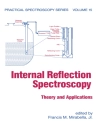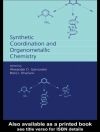Discover the most cutting-edge solutions to the environmental problems posed by coal
In Innovative Approaches towards Ecological Coal Mining and Utilization, a distinguished team of researchers delivers a comprehensive and fulsome exploration of the ecological problems caused by coal mining and utilization. The book discusses environmental pollution and carbon emissions in the context of modelling coal engineering issues, the design of innovative coal engineering systems, and the evaluation of innovative coal mining systems.
The authors consider the technical and economic viability of each proposed solution, making the book ideal reading for environmental and energy researchers in academic and industrial circles. Fully interdisciplinary, Innovative Approaches towards Ecological Coal Mining and Utilization offers readers an integrated look at the management science and policy simulation involved solutions to ecological problems caused by coal mining and utilization.
The included resources make full use of expansive case studies to illustrate the concepts discussed in the book, as well as robust economic analyses of the various technologies. Readers will also discover:
- A thorough introduction to ecological coal mining and developing trends in ecological coal utilization
- Comprehensive explorations of innovative approaches in coal mining and a multiple coal seams-oriented equilibrium strategy towards coal-water conflict resolution
- Practical discussions of seasonal change-oriented dynamic strategies towards coal-water conflict resolution and GIS-oriented equilibrium strategies for coal gangue contamination mitigation
- In-depth examinations of carbon dioxide emission reduction in coal-fired power operations
Perfect for environmental and water chemists, mining specialists, and chemical engineers, Innovative Approaches towards Ecological Coal Mining and Utilization will also prove to be an invaluable addition to the libraries of process engineers seeking the latest information on solutions to the environmental problems caused by coal mining and utilization.
Tabla de materias
Preface xiii
Acknowledgments xvii
1 Technical Developing Pathway of Ecological Coal Mining 1
1.1 Background Introduction 1
1.2 Coal Mining Technology Development 3
1.2.1 Literature Analyses 3
1.2.1.1 Data Analysis System 4
1.2.1.2 Knowledge Diagram 5
1.2.2 Three Periods of Coal Mining Technology 7
1.2.2.1 Competition Phase 8
1.2.2.2 Diffusion Phase 8
1.2.2.3 Shift Phase 9
1.3 Discussion 11
References 14
2 Developing Trending Toward Ecological Coal Utilization 19
2.1 Background Introduction 19
2.2 Coal Utilization Evolution 21
2.2.1 Initial Technological Competition 24
2.2.2 Fierce Innovative Diffusion 26
2.3 Coal Utilization Development Trends 28
2.3.1 Disruptive Integrated Shift 28
2.3.2 No-Coal-on-Ground Integrated Energy System 30
2.4 Discussion 32
References 33
3 Multiple Coal Seam Coproduction-Oriented Equilibrium Approach Toward Coal–Water Conflict 37
3.1 Background Review 38
3.1.1 Multiple Coal Seam Production System 38
3.1.2 Mining Quota Allocation Scheme 38
3.1.3 Uncertain Condition 39
3.2 Modeling 40
3.2.1 Motivation for Employing Uncertain Variables 40
3.2.2 Typical Fuzzy Variables in the Proposed Method 42
3.2.3 Assumptions and Notations 43
3.2.3.1 Assumptions 43
3.2.3.2 Notations 43
3.2.4 Lower Level Decision-Making Model 43
3.2.4.1 Objective Function 43
3.2.4.2 Constraints 45
3.2.5 Upper Level Decision Making Model 47
3.2.5.1 Objective 47
3.2.5.2 Constraints 47
3.2.6 Global Optimization Model 48
3.3 Solution Approach 49
3.3.1 Parameters Defuzzification 50
3.3.2 KKT Condition Transformation 51
3.4 Case Study 52
3.4.1 Presentation of Case Problem 52
3.4.2 Data Collection 54
3.4.3 Results for Different Scenarios 55
3.4.3.1 Scenario 1: Water Quality Standards I 55
3.4.3.2 Scenario 2: Water Quality Standards II 55
3.5 Discussion 59
3.5.1 Propositions and Analysis 59
3.5.2 Management Recommendations 61
References 62
4 Seasonal Changes-Oriented Dynamic Strategy Toward Coal–Water Conflict Resolutions 63
4.1 Background Expression 63
4.2 Methodology 65
4.2.1 Key Problem Statement 65
4.2.2 Modeling 66
4.2.2.1 Assumption 66
4.2.2.2 Notations 66
4.2.2.3 Logical Representation for the Collieries 68
4.2.2.4 Logical Representation for the Authority 71
4.2.2.5 Global Optimization Model for the EP-MQC 73
4.2.3 Model Transformation 74
4.3 Case Study 75
4.3.1 Presentation of the Case Region 76
4.3.2 Data Collection 76
4.3.3 Results Under Different Situations 77
4.4 Discussion 79
4.4.1 Propositions and Analysis 79
4.4.2 Policy Recommendations 84
References 86
5 GIS-Oriented Equilibrium Strategy Toward Coal Gangue Contamination Mitigating 89
5.1 Review of Background 89
5.2 Key Problem Statement 92
5.3 Coal Gangue Facility Siting Method 94
5.3.1 Identifying Candidate Sites Using GIS Technique 94
5.3.2 Selecting the Optimal Site Using the Modeling Technique 96
5.3.2.1 Assumptions 96
5.3.2.2 Notations 96
5.3.2.3 Model Formulation 97
5.3.3 Model Transformation 103
5.4 Case Study 105
5.4.1 Case Region Presentation 105
5.4.2 GIS Technique 106
5.4.3 Modeling Technique 107
5.4.4 Data Collection 107
5.4.5 Computational Results and Analysis 109
5.4.5.1 Scenario 1: ???? = 1.0 109
5.4.5.2 Scenario 2: ???? = 0.9 109
5.4.5.3 Scenario 3: ???? = 0.8 112
5.4.5.4 Scenario 4: ???? = 0.7 112
5.4.5.5 Scenario 5: ???? = 0.6 113
5.5 Discussion 114
5.5.1 Propositions 114
5.5.2 Management Recommendations 116
References 117
6 Dynamic Investment Strategy Toward Emissions Reduction and Energy Conservation of Coal Mining 121
6.1 Background Review 121
6.1.1 Multi-system Consideration of Emission and Energy 122
6.1.2 Multidimensional Consideration of Economic and Ecological Benefits 123
6.1.3 Multi-stage Consideration of Environmental Investment 123
6.2 Modeling 125
6.2.1 Assumptions 125
6.2.2 Notations 125
6.2.3 Colliery Economic Benefit: Profit Objective 127
6.2.4 Colliery Ecological Benefit: Emission Reduction and Energy Conservation 128
6.2.5 Coal Production and Environmental Investment Activities 128
6.2.6 State Process Control Colliery Operations 129
6.2.7 Ecological Coal Mining Economic-Ecological Equilibrium Model 130
6.3 Economic-Ecological Equilibrium Model Solution Approach 131
6.3.1 General Parameterization 131
6.3.2 Fuzzy Goals for the Multiobjective Model 132
6.3.3 Standard and AM-Based PSO for Nonlinear Dynamic Model 133
6.4 Case Study 135
6.4.1 Case Description 135
6.4.2 Parametrization 135
6.4.3 Data Collection 136
6.4.4 Results and Different Scenarios 138
6.4.4.1 Results Analysis 138
6.4.4.2 Sensitivity Analysis 138
6.5 Discussion and Analysis 143
6.5.1 Comprehensive Discussion for Results 143
6.5.2 Management Implications 148
References 149
7 Carbon Dioxide Emissions Reduction-Oriented Integrated Coal-Fired Power Operation Method 153
7.1 Background Review 153
7.2 Key Problem Statement 155
7.3 Modeling 157
7.3.1 Assumptions 157
7.3.2 ICPBD Strategy Intentions 157
7.3.2.1 Maximizing Economic Benefit 157
7.3.2.2 Minimizing CO2 Emissions 160
7.3.3 ICPBD Strategy Limitations 160
7.3.3.1 Coal Purchase Phase Restriction 160
7.3.3.2 Coal Storage Phase Restrictions 160
7.3.3.3 Coal Blending Phase Restrictions 161
7.3.3.4 Coal Distribution Phase Restrictions 163
7.3.4 Global Model 163
7.4 Case Study 165
7.4.1 Presentation of Case Region 165
7.4.2 Model Transformation 165
7.4.3 Data Collection 167
7.5 Results and Discussion 167
7.5.1 Results for Different Scenarios 167
7.5.2 Propositions and Analysis 173
7.5.3 Management Recommendations 181
References 183
8 Equilibrium Coal Blending Method Toward Multiple Air Pollution Reduction 187
8.1 Background Presentation 187
8.1.1 Relationship Among All the Stakeholders 189
8.1.2 Decision Carrier Between All the Stakeholders 190
8.1.3 Modeling 192
8.1.3.1 Notations 192
8.1.3.2 Objectives of the Authority 193
8.1.3.3 Constrains of the Authority 195
8.1.3.4 Objectives of the CPPs 196
8.1.3.5 Constraints of the CPPs 197
8.1.3.6 Global Optimization Model 198
8.2 Case Study 199
8.2.1 Presentation of the Case Region 200
8.2.2 Model Transformation and Solution Approach 200
8.2.3 Data Collection 201
8.3 Results and Discussion 203
8.3.1 Results Under Different Scenarios 203
8.3.2 Propositions and Analysis 206
8.3.3 Management Recommendations 221
References 221
9 Equilibrium Biomass–Coal Blending Method Toward Carbon Emissions Reduction 225
9.1 Background Review 225
9.2 Key Problem Statement 227
9.3 Modeling 228
9.3.1 Assumption 229
9.3.2 Notations 229
9.3.3 Model for the Local Authority 230
9.3.3.1 Objective 1: Maximizing Financial Revenue 230
9.3.3.2 Objective 2: Minimizing Carbon Emissions 231
9.3.3.3 Limitation on the CPPs’ Operations 231
9.3.3.4 Power Supply Demand Restriction 231
9.3.3.5 Limitation on the Different Between the Quota and the Actual Emission 231
9.3.4 Model for CPPs 233
9.3.4.1 Objective: Maximizing Economic Benefits 233
9.3.4.2 Combustion Efficiency Constraint 233
9.3.4.3 Limitations on Fuel Quantities and Qualities 234
9.3.4.4 Technical Constraint 234
9.3.4.5 Social Responsibility Limitation 234
9.3.4.6 Carbon Emissions Quota Constraint 234
9.3.4.7 Fuel Resources Storage Limitation 235
9.3.5 Global Model 235
9.4 Case Study 236
9.4.1 Case Description 236
9.4.2 Model Transformation and Solution Approach 236
9.4.3 Data Collection 238
9.5 Results and Discussion 240
9.5.1 Results Under Different Scenarios 243
9.5.2 Propositions and Analyses 243
9.5.3 Policy Implications 251
References 251
10 Carbon Emission Reduction-Oriented Equilibrium Strategy for Thermal–Hydro–Wind Generation System 255
10.1 Background Introduction 255
10.2 Modeling 259
10.2.1 Notations 259
10.2.2 Objectives 261
10.2.2.1 Carbon Emissions Reduction 261
10.2.2.2 Water Resources Wastes 261
10.2.2.3 Wind Power Utilization 262
10.2.2.4 Power Supply Balance 262
10.2.3 Constraint 263
10.2.3.1 Constraints of Wind Power 263
10.2.3.2 Constraints of Coal-Combusted Power Plants 263
10.2.3.3 Constraint of Hydropower Station 264
10.2.3.4 Constraints of Hybrid Generation System 265
10.2.3.5 Global Model 265
10.3 Case Study 267
10.3.1 Case Description 267
10.3.2 Model Transformation 267
10.4 Data Collection 269
10.5 Result and Discussion 270
10.5.1 Result Under Different Scenarios 271
10.5.2 Comprehensive Discussion of Results 271
10.5.3 Management Recommendations 280
References 281
11 Economic-Environmental Equilibrium-Based Wind–Solar–Thermal Power Generation System 285
11.1 Background Introduction 285
11.2 Key Problem Statement 287
11.3 Modeling 290
11.3.1 Notations 290
11.3.2 Objectives 290
11.3.2.1 Economic Profits 290
11.3.2.2 Carbon Emissions 291
11.3.2.3 Renewable Energy Utilization 291
11.3.3 Constraints 293
11.3.3.1 Constraints of Hybrid System 293
11.3.3.2 Constraints of Thermal Power Plant 294
11.3.3.3 Constraints of Wind Power Plant 296
11.3.3.4 Constraints of Solar Power Plant 296
11.3.4 Global Model 296
11.4 Case Study 298
11.4.1 Case Description 298
11.4.2 Model Transformation 299
11.4.3 Data Collection 301
11.4.4 Results and Analysis 303
11.5 Discussion 315
11.5.1 Propositions and Analysis 315
11.5.2 Management Recommendations 316
References 317
12 Carbon Emissions Reductions-Oriented Equilibrium Strategy for Municipal Solid Waste with Coal Co-combustion 321
12.1 Background Introduction 321
12.2 Key Problem Statement 323
12.2.1 Conflict and Cooperation Between the Decision-Makers 323
12.2.2 Trade-Off Between the Economy and the Environment 324
12.2.3 Problem Analysis for MSW/Coal Co-combustion 324
12.3 Modeling 326
12.3.1 Assumptions 326
12.3.2 Notations 326
12.3.3 Allocation Scheme for the Authority 326
12.3.3.1 Maximizing Financial Revenue 326
12.3.3.2 Minimizing Carbon Emissions 327
12.3.3.3 Electricity Supply Meeting Demand 327
12.3.3.4 Requirements for the MSWACPPs’ Operating Rights 328
12.3.4 Production Strategy for MSWACPPs 329
12.3.4.1 Pursuing Maximum Profits 329
12.3.4.2 Coal’s Inhibitory Effect on Dioxin Emissions 329
12.3.4.3 Dioxin Emissions Risk Control 330
12.3.4.4 Limited Carbon Emissions Quota 330
12.3.4.5 Social Responsibility 330
12.3.4.6 Fuel Quality Required by the Incinerators 331
12.3.4.7 Limited Fuel Quantity 331
12.3.5 Global Model 331
12.4 Case Study 333
12.4.1 Case Description 333
12.4.2 Model Transformation and Solution Approach 333
12.4.3 Data Collection 335
12.4.4 Results Under Different Scenarios 336
12.5 Discussion 344
12.5.1 Propositions and Analysis 344
12.5.2 Management Recommendations 345
References 349
Index 353
Sobre el autor
Jiuping Xu is Professor at Sichuan University. He obtained his first Ph. D. degree in applied mathematics at Tsinghua University, then obtained his second Ph. D. degree in physical chemistry at Sichuan University. Through combining the theories and methodologies of system science and mathematics, he built the decision and technology innovation paradigm, which is called ‘Theory Spectrum-Model Group-Algorithm Cluster’ (‘TS-MG-AC’) paradigm, for the complex energy development and environmental protection problems with multivariant subject, multilevel structure, multiplicity objective, and multistage process. He also developed the ‘multivariant-multilevel-dynamic equilibrium’ organization management technology, and has overcome pressing and major problems in the fields of energy related real-world problems. He has published more than 600 peer-reviewed journal articles and over 40 books.
Prof. Heping Xie worked as the former president of Sichuan University (2003-2017). He is the Academician of Chinese Academy of Engineering since 2001. He has received over 40 prizes. Until now, he has published more than 100 peer-reviewed research articles and 6 academic monographs in both English and Chinese.
Chengwei Lv is a Ph D candidate at School of Business, Sichuan University. He is now a visiting scholar at The Joseph M. Katz Graduate School of Business, University of Pittsburgh. His research focuses on integrating game theory and dynamic control theory into coal industry to achieve cleaner production. Until now, he has published 21 peer-reviewed papers.












